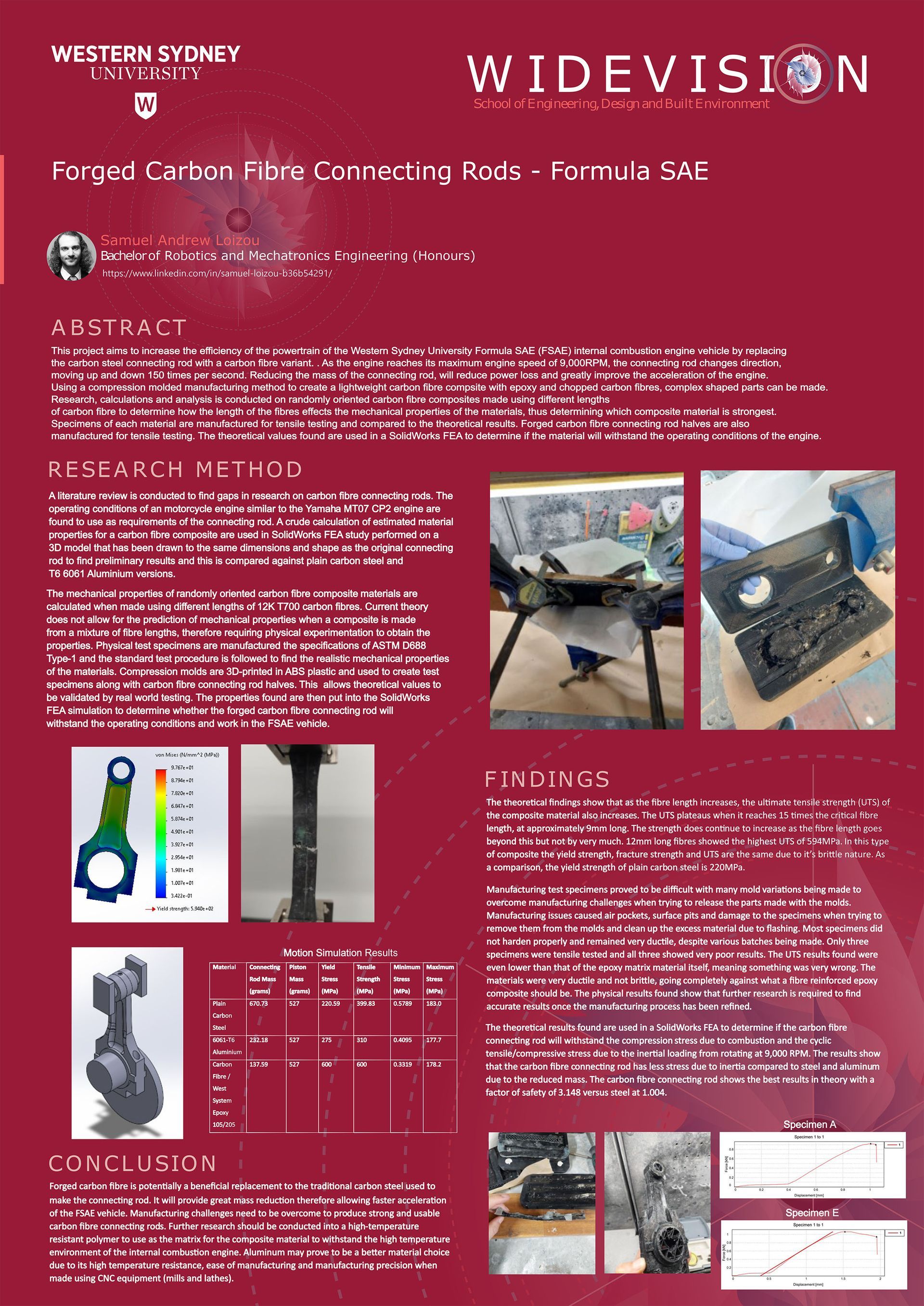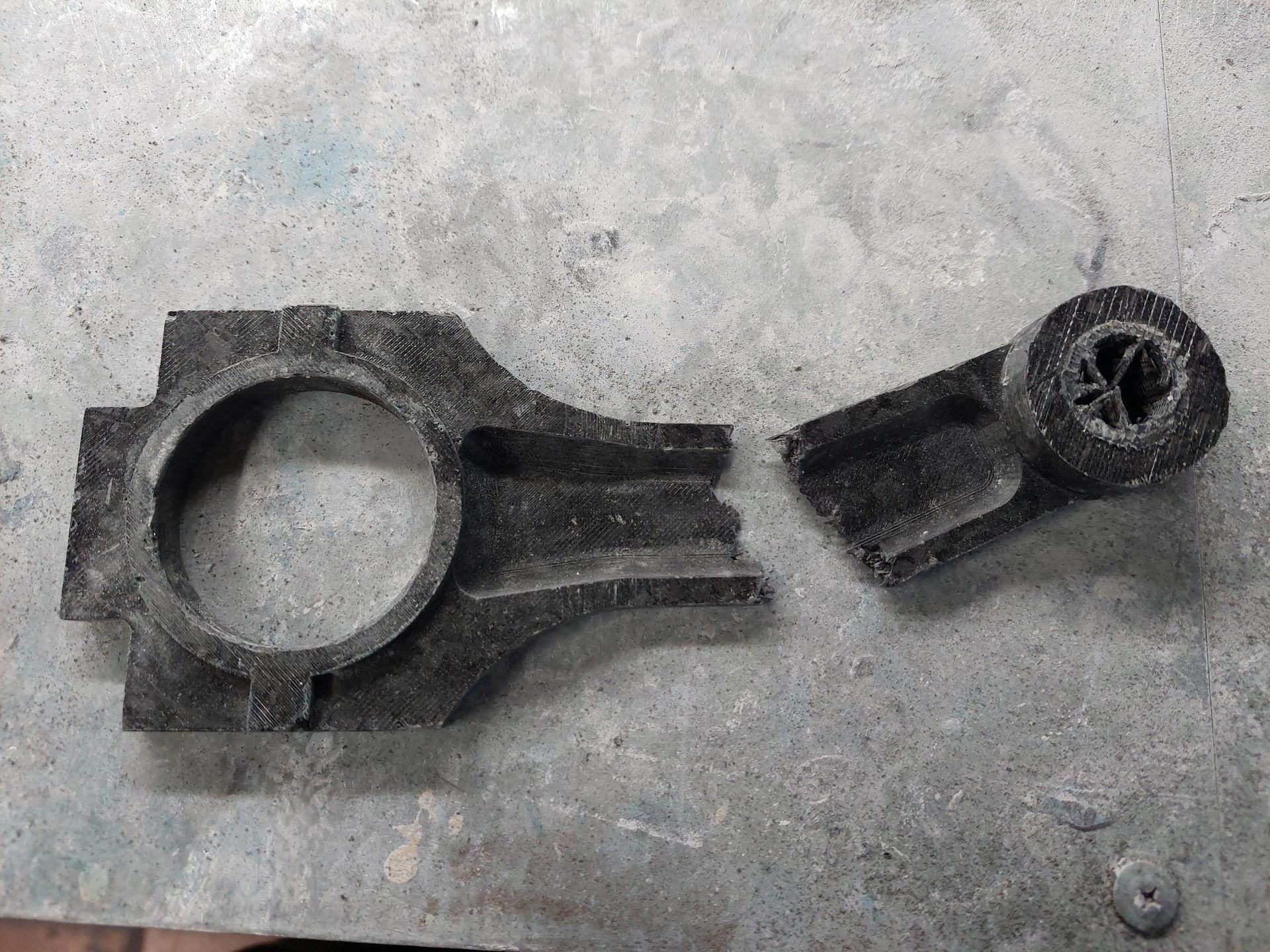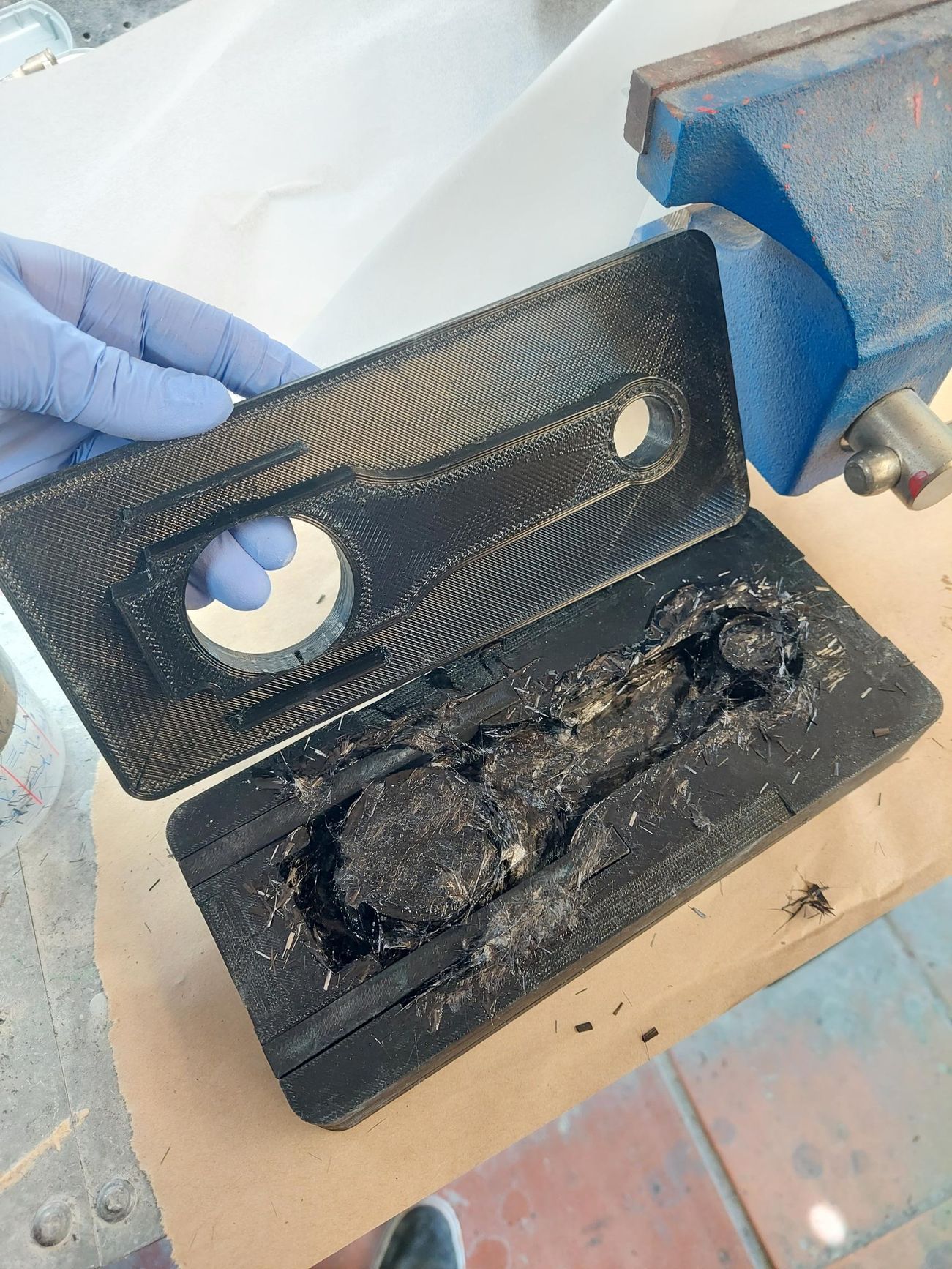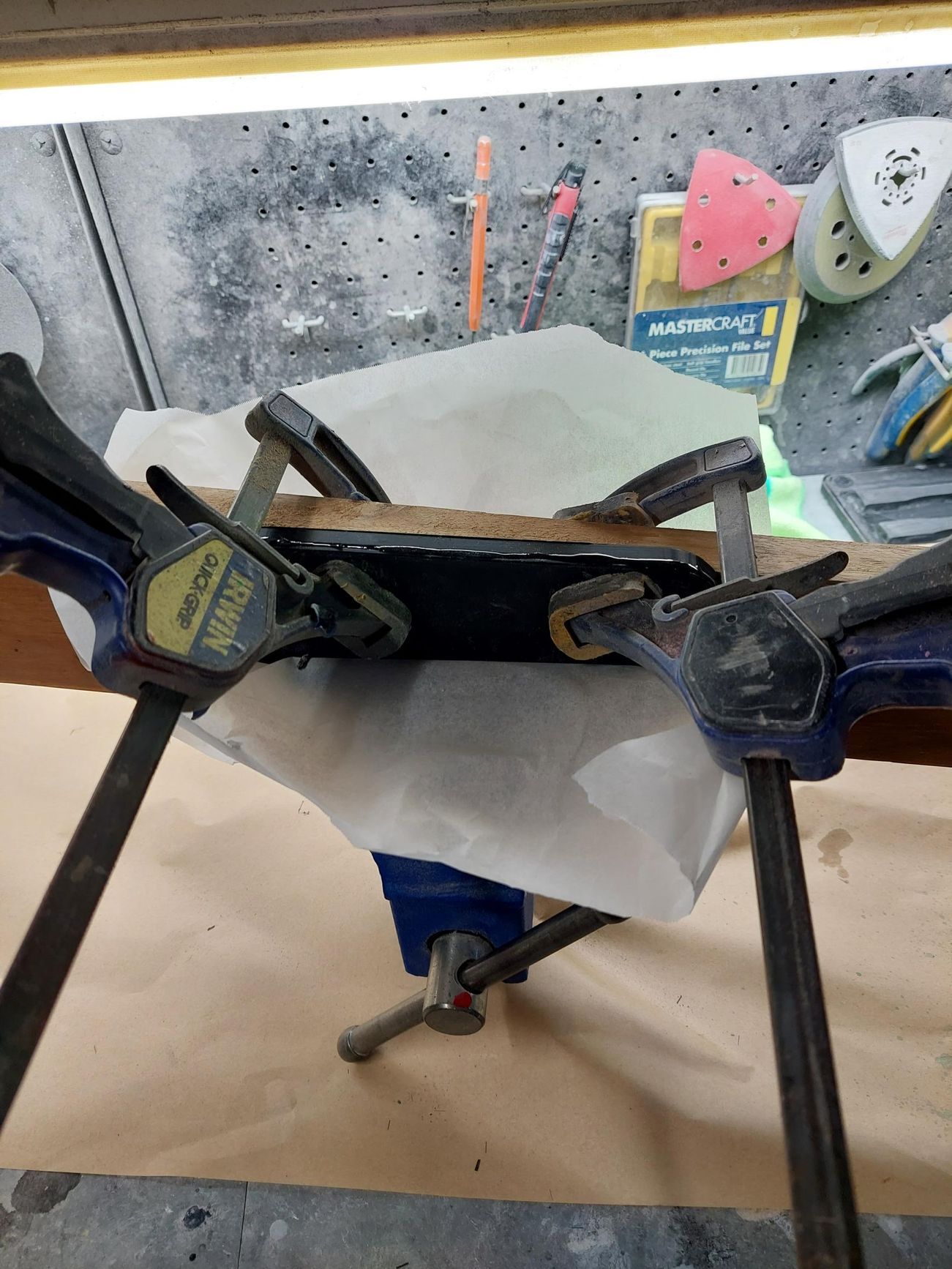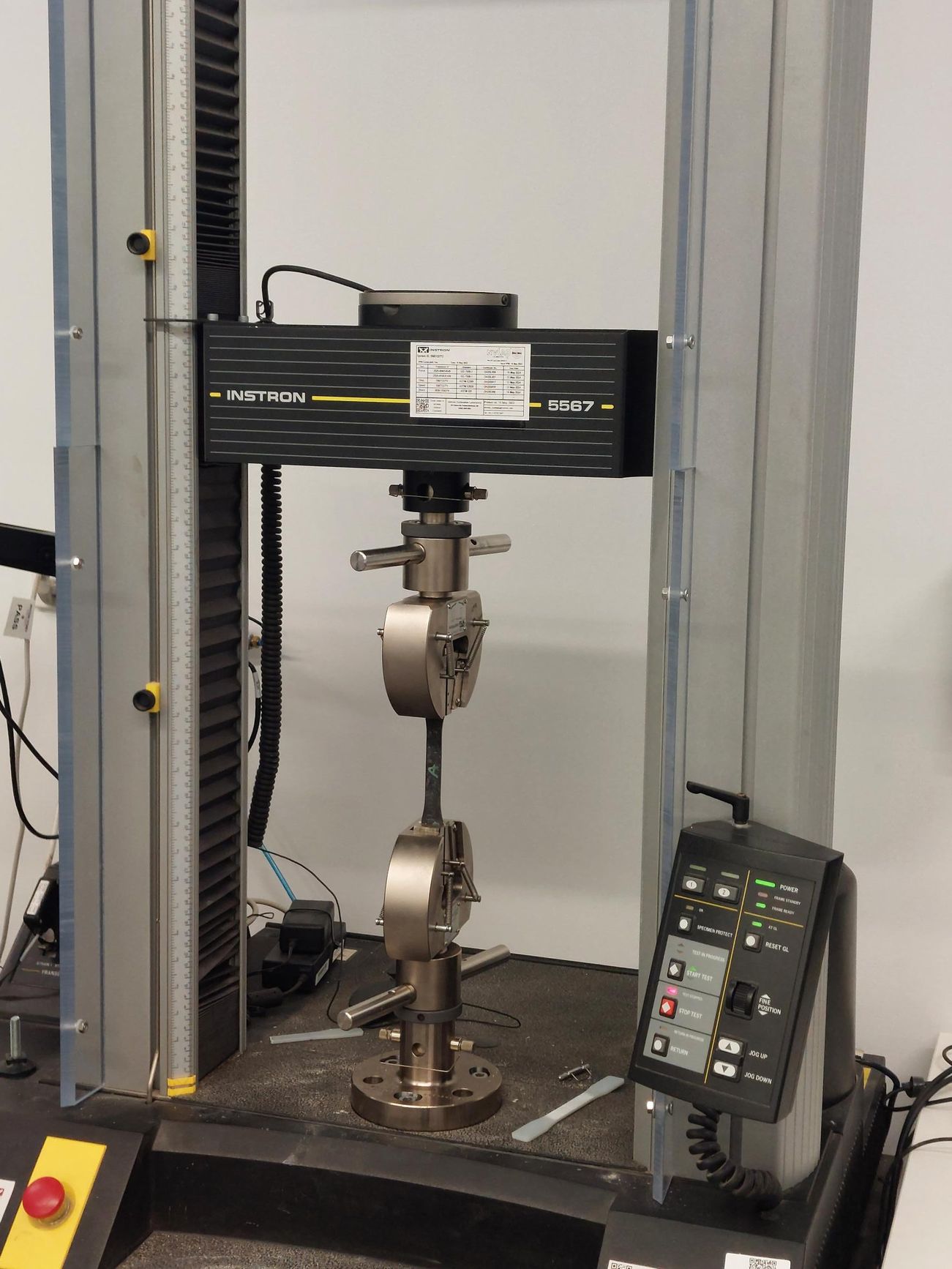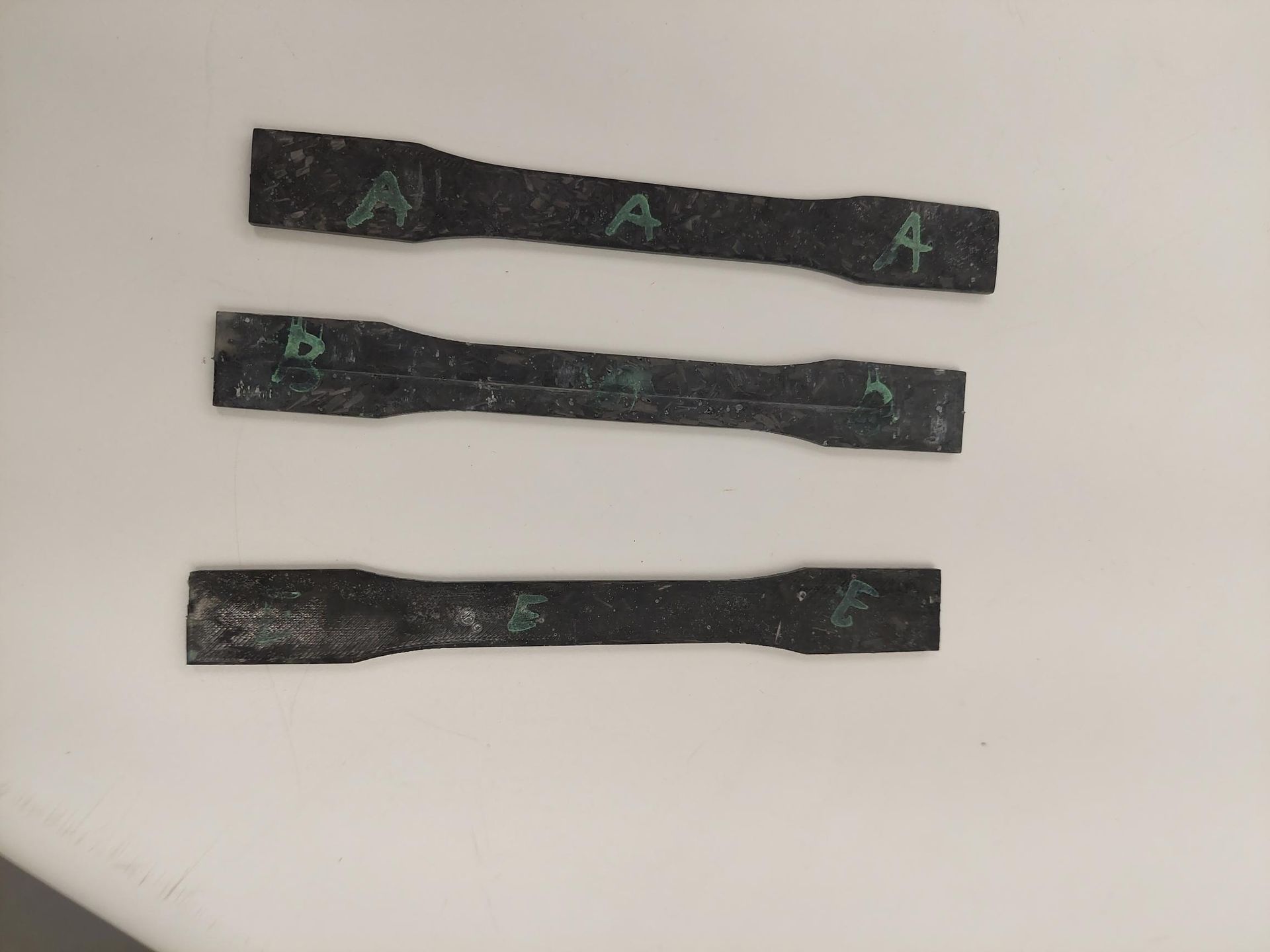Samuel Louizou
Bachelor of Engineering, Honours
Samuel is a student of Mechatronics and Robotics engineering at Western Sydney University. With a background in designing and producing parts for race vehicles using additive manufacturing, he enjoys problem solving and coming up with innovative solutions. Samuel doesn’t see big dreams and aspirations as being unfeasible, but just another challenge that requires creative thinking and solutions to achieve. Dream big and make those dreams come true.
Forged Carbon Fibre Connecting Rods - Formula SAE
This project aims to increase the efficiency of the powertrain of the Western Sydney University Formula SAE (FSAE) internal combustion engine vehicle by replacing the carbon steel connecting rod with a carbon fibre variant. The FSAE team dreams of turbocharging the Yamaha MT07 CP2 engine in their competition vehicle and reducing the resistance to motion of moving parts in the engine will greatly improve the engine response and acceleration of the vehicle. As the engine reaches its maximum engine speed of 9,000RPM, the connecting rod changes direction, moving up and down 150 times per second. Reducing the mass of the connecting rod, will reduce power loss and greatly improve the acceleration of the engine.
By allowing the engine to accelerate faster across the RPM range, the engine can reduce the ‘turbo lag’ phase and further benefit the use of a turbocharger. The traditional material used for the connecting rod is carbon steel. Lightweight material options include aluminum and carbon fibre. Using a compression molded manufacturing method to create a carbon fibre compsite with epoxy and chopped carbon fibres, complex shaped parts are able to be made.
The connecting rod can be made using a 3D-printed compression mold filled with this epoxy and chopped randomly oriented carbon fibres at the ideal ratio of 60% carbon to 40% epoxy. Research, calculations and analysis is conducted on randomly oriented carbon fibre composites made using different lengths of carbon fibre to determine how the length of the fibres effects the mechanical properties of the materials, thus determining which composite material is strongest. Specimens of each material are manufactured to be tensile tested and compared to the theoretical results. Forged carbon fibre connecting rod halves are also manufactured for tensile testing.
The theoretical values found are used in a SolidWorks FEA to determine if the material will withstand the operating conditions of the engine. Thermal conditions are noted but not factored into the requirements of the connecting rod.


